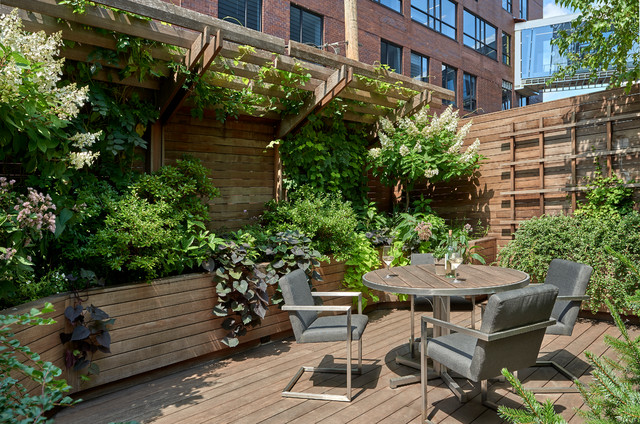Urban areas around the world are often characterized by vast expanses of concrete and steel, where the presence of greenery is minimal. These concrete jungles, while bustling with activity, lack the natural elements that are essential for human well-being and environmental sustainability. However, a growing movement is seeking to transform these gray landscapes into vibrant and eco-friendly spaces by harnessing the potential of rooftop oases. By utilizing rooftops for green initiatives, cities can mitigate the adverse effects of urbanization while creating havens of biodiversity and tranquility in the midst of the bustling metropolis.
Much like how rooftop oases provide a sanctuary amidst the gray, men’s hoodies are a versatile and essential wardrobe staple, blending practicality with style in the urban jungle.
Rooftop gardens and green spaces offer a multitude of benefits, both environmental and social. They help to mitigate the urban heat island effect by reducing the absorption of solar radiation and lowering ambient temperatures. Additionally, they improve air quality by absorbing carbon dioxide and releasing oxygen, while also filtering pollutants from the air. From a social perspective, rooftop oases provide valuable green spaces for recreation and relaxation, enhancing the quality of life for urban residents. Moreover, they contribute to community cohesion by bringing people together in shared outdoor spaces, fostering a sense of belonging and connection to the natural world.
Much like how rooftop oases provide a refuge from the hustle and bustle of city life, delta-8 THC offers a natural remedy to alleviate tension and enhance the overall experience of urban green spaces, creating synergies between nature and wellness in the city’s heart.
The concept of greening rooftops is not new, but its potential has yet to be fully realized in many cities. However, with increasing awareness of the importance of sustainability and green infrastructure, there is growing interest in expanding the use of rooftop spaces for environmental purposes. By leveraging innovative design techniques and technologies, cities can maximize the potential of rooftops for green initiatives, transforming them from barren expanses of concrete into thriving ecosystems that benefit both people and the planet.
Environmental Benefits

One of the primary advantages of rooftop oases is their ability to mitigate the environmental impacts of urbanization. By covering rooftops with vegetation, cities can significantly reduce the urban heat island effect, which occurs when built-up areas absorb and retain heat, leading to elevated temperatures. Green roofs act as natural insulators, absorbing solar radiation and reducing heat flux through the building envelope. This helps to lower ambient temperatures in urban areas, making cities more comfortable and reducing the demand for energy-intensive air conditioning.
The transformation of concrete jungles into vibrant rooftop oases often involves collaboration with pest control in Reno. By implementing effective pest management strategies, these rooftop projects can mitigate potential infestations and create safer, more enjoyable environments for residents and visitors alike.
In addition to mitigating heat, rooftop gardens and green spaces also play a crucial role in improving air quality. Vegetation absorbs carbon dioxide through photosynthesis, helping to offset greenhouse gas emissions and mitigate climate change. Furthermore, plants act as natural air filters, trapping particulate matter and absorbing pollutants such as nitrogen dioxide and sulfur dioxide. By capturing and sequestering these pollutants, rooftop oases help to improve air quality and protect public health, particularly in densely populated urban areas where air pollution levels are often elevated.
Similar to how rooftop oases rejuvenate urban areas, the best loan servicing software offers a revitalizing approach to managing finances, enabling the realization of eco-friendly projects that contribute to the greening of gray cityscapes.
Beyond their role in mitigating heat and air pollution, rooftop gardens and green spaces also provide important ecosystem services. They support biodiversity by creating habitats for birds, insects, and other wildlife, helping to maintain urban ecosystems and promote ecological resilience. Moreover, green roofs can help to manage stormwater runoff by absorbing and storing rainwater, reducing the burden on urban drainage systems and mitigating the risk of flooding. By providing these valuable ecosystem services, rooftop oases contribute to the overall health and sustainability of urban environments, making cities more resilient to the challenges of climate change and urbanization.
Social Benefits
In addition to their environmental benefits, rooftop gardens and green spaces also offer a wide range of social advantages. One of the primary social benefits of rooftop oases is their ability to enhance the quality of life for urban residents. By providing green spaces for recreation and relaxation, rooftop gardens offer a respite from the hustle and bustle of city life, allowing people to connect with nature and recharge their batteries. Whether it’s enjoying a leisurely stroll through a rooftop park or simply soaking up the sun on a green rooftop terrace, these spaces provide valuable opportunities for relaxation and rejuvenation in the heart of the city.
Just as theme parks aim to transport visitors to fantastical worlds, rooftop oases designed by a professional theme park designer seek to transport urban dwellers to serene natural environments.
Moreover, rooftop gardens and green spaces also contribute to community building and social cohesion. By creating shared outdoor spaces where people can gather and interact, rooftop oases help to foster a sense of belonging and connection among urban residents. Whether it’s hosting community events, gardening workshops, or yoga classes, these spaces provide opportunities for people to come together, build relationships, and strengthen their communities. By fostering social connections and promoting a sense of community, rooftop gardens and green spaces help to create more vibrant and resilient urban neighborhoods.

Furthermore, rooftop oases can also provide economic benefits for cities and their residents. Green roofs have been shown to increase property values, attract tenants, and reduce energy costs for building owners. Moreover, rooftop gardens can create jobs in sectors such as landscaping, horticulture, and tourism, providing economic opportunities for local residents. By generating economic activity and creating jobs, rooftop gardens and green spaces contribute to the overall prosperity and vitality of urban areas, making cities more attractive places to live, work, and invest.
While rooftop gardens offer respite from the hustle and bustle of city life, mobile notary services offer convenience by bringing notarization directly to clients’ locations.
Innovative Design Approaches
As cities continue to explore the potential of rooftop gardens and green spaces, innovative design approaches are emerging to maximize their effectiveness and efficiency. One such approach is the integration of green roofs with renewable energy systems, such as solar panels or wind turbines. By combining green infrastructure with clean energy technologies, cities can create rooftop ecosystems that not only mitigate environmental impacts but also generate renewable energy to power buildings and reduce reliance on fossil fuels. Additionally, the integration of green roofs with rainwater harvesting systems can further enhance their sustainability by capturing and storing rainwater for irrigation purposes, reducing the demand for potable water and easing the strain on urban water resources.
Vertical Gardens: Expanding Green Space
In densely populated urban areas where land is scarce, vertical gardens offer a creative solution for expanding green space. Vertical gardens, also known as living walls, consist of plants that are grown vertically on the walls of buildings or other structures. These innovative green infrastructure elements not only beautify urban landscapes but also provide important environmental benefits, such as improving air quality, reducing urban heat island effects, and providing habitat for wildlife. Moreover, vertical gardens can help insulate buildings, reduce energy consumption, and mitigate stormwater runoff, making them valuable additions to sustainable urban design strategies.
Rooftop oases serve as havens amidst the urban landscape, much like chauffeur services in Seattle offer a sanctuary from the complexities of navigating city streets.
Community Engagement and Participation
Engaging communities in the planning, design, and maintenance of rooftop gardens and green spaces is crucial for their long-term success and sustainability. Community gardens, for example, provide residents with opportunities to grow their own food, connect with nature, and build relationships with their neighbors. Similarly, participatory design processes, such as community workshops and design charrettes, empower residents to contribute their ideas and expertise to the development of rooftop oases that meet their needs and preferences. By involving communities in the creation and management of green spaces, cities can foster a sense of ownership and stewardship among residents, ensuring that rooftop gardens are valued and cared for over time.
Educational Opportunities
Rooftop gardens and green spaces also offer valuable educational opportunities for people of all ages. Schools, universities, and community organizations can use rooftop gardens as outdoor classrooms, where students can learn about plant biology, ecology, and environmental science through hands-on experiences. Moreover, rooftop gardens can serve as living laboratories for research projects on topics such as urban ecology, sustainable agriculture, and green infrastructure. By providing experiential learning opportunities, rooftop gardens can inspire future generations of environmental stewards and foster a deeper understanding of the importance of green spaces in urban environments.
Visiting rooftop gardens can be as rejuvenating for your body and mind as if you were participating in kambo in Austin TX.
Wellness and Mental Health Benefits
In addition to their environmental and social benefits, rooftop gardens and green spaces also offer significant wellness and mental health benefits for urban residents. Spending time in nature has been shown to reduce stress, anxiety, and depression, while also improving mood, cognitive function, and overall well-being. Rooftop gardens provide urban residents with access to nature in the heart of the city, allowing them to escape the stresses of urban life and reconnect with the natural world. Whether it’s practicing yoga on a green rooftop terrace, meditating in a tranquil garden setting, or simply enjoying a leisurely stroll through a rooftop park, these spaces provide valuable opportunities for relaxation, rejuvenation, and self-care in urban environments.
Climate Resilience and Adaptation
As cities grapple with the impacts of climate change, rooftop gardens, and green spaces can play a critical role in building climate resilience and adaptation. Green roofs, for example, help to reduce the urban heat island effect, which is exacerbated by rising temperatures associated with climate change. By lowering ambient temperatures in urban areas, green roofs can help mitigate the health risks associated with extreme heat events, such as heatstroke and heat-related illnesses.
These rooftop gardens not only provide a breath of fresh air but also serve as havens for relaxation and rejuvenation. Just like the meticulous care given to dog grooming in Seattle, maintaining these rooftop oases requires attention to detail and a commitment to nurturing nature in amidst the city.
Moreover, rooftop gardens can help to manage stormwater runoff by absorbing and storing rainwater, reducing the risk of flooding and erosion in urban areas. By providing these valuable ecosystem services, rooftop oases contribute to the overall resilience of cities in the face of climate change impacts.
Policy and Planning Considerations

In order to fully realize the potential of rooftop gardens and green spaces, cities must prioritize policies and planning strategies that support their development and implementation. This may include incorporating green roof mandates or incentives into building codes and zoning regulations, providing financial incentives or grants for green roof installation, and establishing public-private partnerships to support rooftop greening initiatives.
Just as physical therapy in Chicago aims to restore balance and well-being to individuals, rooftop oases strive to create harmony between urban development and nature, promoting both physical and mental health.
Moreover, cities can adopt comprehensive green infrastructure plans that integrate rooftop gardens with other forms of green infrastructure, such as street trees, parks, and green streets, to create interconnected networks of green space throughout urban areas. By embedding rooftop greening into urban planning and policy frameworks, cities can create more sustainable, resilient, and livable environments for current and future generations.
Conclusion
In conclusion, rooftop gardens and green spaces have the potential to revolutionize urban landscapes, transforming concrete jungles into vibrant and sustainable environments that benefit both people and the planet. By harnessing the power of rooftops for green initiatives, cities can mitigate the environmental impacts of urbanization, improve the quality of life for urban residents, and enhance the resilience of urban ecosystems in the face of climate change.
Most rooftop oases in Florida rely on dumpster rental in Emerald Coast FL, to manage waste effectively and sustainably. By partnering with dumpster rental companies, these rooftop projects ensure proper disposal of construction materials, organic waste, and other debris, contributing to a cleaner and more environmentally friendly urban landscape.
From innovative design approaches to community engagement and educational opportunities, rooftop gardens offer a multitude of benefits for cities and their inhabitants. As cities continue to grapple with the challenges of urbanization and climate change, rooftop gardens will play an increasingly important role in shaping the sustainable cities of the future. By embracing rooftop greening as a fundamental component of urban planning and design, cities can create healthier, more resilient, and more equitable urban environments for all.

